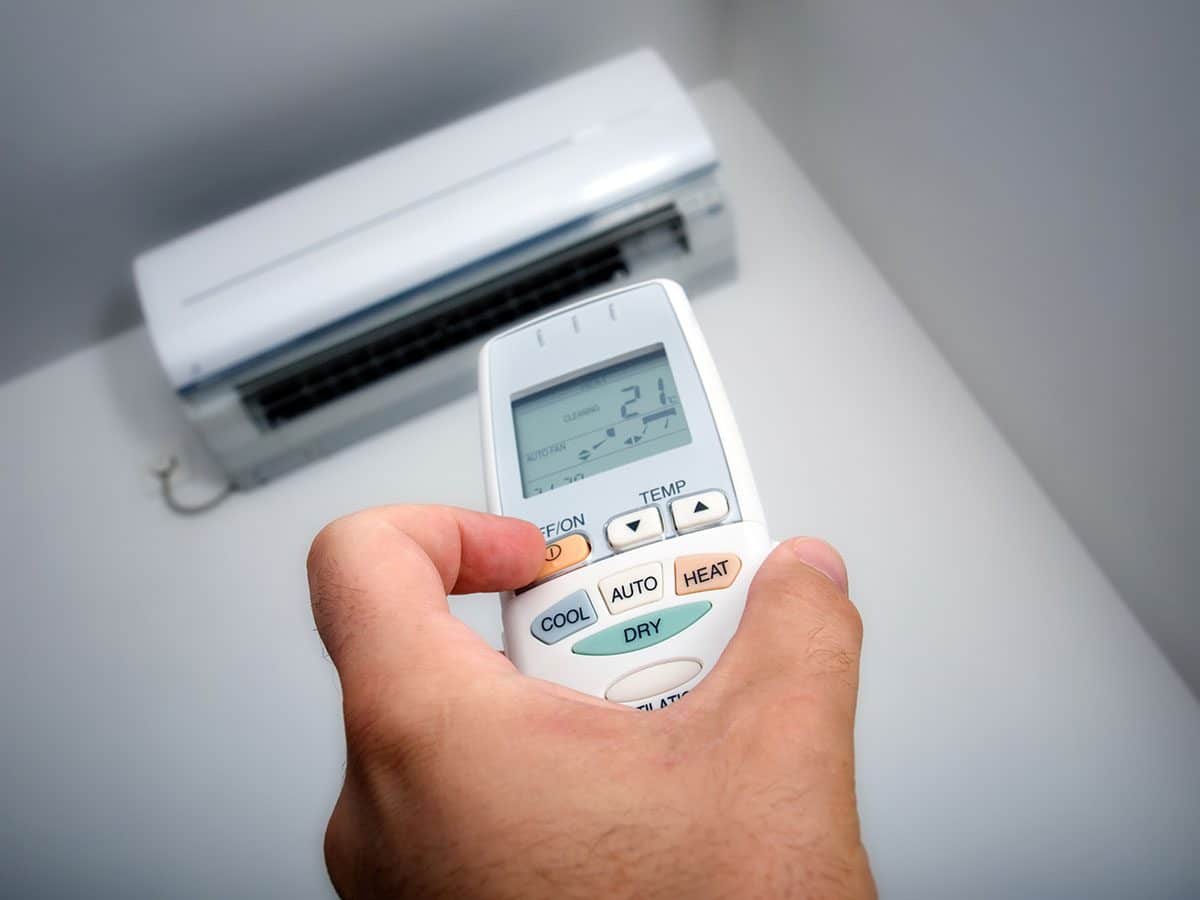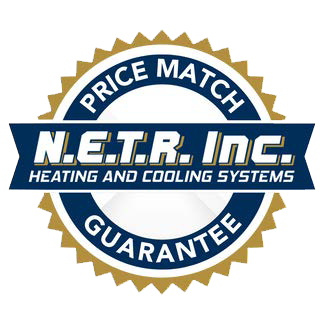When it comes to electric heating and cooling, the variety of options available can be overwhelming. However, before investing in a new system, it’s important that you understand the different options out there. Considering an all-electric home? Want to move away from fossil fuels? Then, you probably want to learn more about electric heating and cooling options.
To help you out, here’s a breakdown of some popular electric heating and cooling options. First, we look at electric furnaces and central AC. Then, we do a round-up of the pros and cons of electric air source heat pumps. Ready to get help now? Then, contact us at N.E.T.R. Inc. today.

Electric Furnaces
Electric furnaces convert electricity into heat with heating elements typically composed of a metal alloy, that are heated via electrical resistance. When the thermostat signals the need for heat, electric current flows through the elements, causing them to heat up. This heat is then distributed throughout your home by means of a fan or blower.
Due to their reliance on electricity, these systems are best suited for areas where electricity costs are low or for homes where natural gas or propane are not readily available. Check out the pros and cons.
Pros of Electric Furnaces
- Efficiency: Electric furnaces convert nearly 100% of the electricity they consume into heat, making them one of the most efficient heating options available.
- Longevity: With proper maintenance, electric furnaces can last up to 20-30 years, longer than many other heating systems.
- Quiet Operation: These furnaces aren’t very noisy, helping to create a quiet, comfortable environment.
Cons of Electric Furnaces
- Higher Running Costs: Due to electricity costs and the inefficiency of these units relative to other options, running an electric furnace can be more expensive than both electric heat pumps and fossil fuel heating.
- High Energy Consumption: Despite their efficiency in converting electricity to heat, the amount of electricity required is considerable, leading to higher energy consumption.
- Not Always Environmentally Friendly: While electric furnaces do not directly emit harmful gases, the source of electricity used could negatively impact the environment, especially if it’s from non-renewable sources.
Central AC Units
Traditional AC units, also known as central air conditioning systems, are commonly used in homes and businesses to provide cooling. These units operate on the principle of refrigeration — They use refrigerant to absorb heat from the indoor air and release it outside, thereby cooling the indoor environment.
The process begins when the indoor air handler fan draws warm air from the interior of the building over the evaporator coil. Here, the heat from the air is absorbed by the refrigerant within the coil, causing the refrigerant to evaporate and the air to cool. This cooled air is then circulated back into the building.
Efficiency, cost, and the size of the area to be cooled are crucial factors to consider when choosing a traditional AC unit. These systems are generally well suited for cooling large areas or entire buildings and are known for their durability and longevity when properly maintained.
Pros of Traditional AC Units
- Whole-Home Cooling: Traditional AC units can cool an entire home or building, ensuring uniform temperature throughout.
- Improved Air Quality: They often come with filters that help eliminate pollutants and allergens from the air, improving indoor air quality.
- Durability: With proper maintenance, these systems can last for 15-20 years.
Cons of Traditional AC Units
- High Energy Consumption: Traditional AC units consume a significant amount of energy, especially when cooling larger spaces, leading to higher electricity bills.
- Expensive Installation and Maintenance: The installation of these systems can be costly, and they require regular professional maintenance to function effectively.
- Requires Ductwork: Traditional AC units requires the home or building to have ductwork in place, which can be a limitation in some structures. Additionally, air gets lost in ductwork, compromising the efficiency of your system.
Ductless Air Source Heat Pumps
Ductless air source heat pumps, also known as mini-split systems, provide both heating and cooling for homes without the need for ductwork. Mini splits are composed of an outdoor compressor unit and one or more indoor air handling units, which are connected through a conduit housing the power cable, refrigerant tubing, suction tubing, and a condensate drain.
Their operation is based on the principle of heat transfer. In heating mode, the pump extracts heat from the outside air and transfers it indoors. The refrigerant inside the outdoor unit absorbs the external heat, converting from a low-pressure, low-temperature gas to a high-pressure, high-temperature gas. This heated refrigerant is then pumped to the indoor unit(s), where it releases its heat to warm the interior of the home.
In cooling mode, the process is reversed. The system pulls heat from the indoor air and releases it outside, thereby cooling the interior of the home. This is achieved as the refrigerant absorbs heat and humidity from the indoor air and then moves it through the conduit to the outside unit, where it is released.
Ductless heat pumps stand out for their energy efficiency, easy installation, and versatility, as they can be used for both heating and cooling. They are ideal for homes with no existing ductwork or for those looking to supplement or replace their existing heating/cooling systems.
Pros of Ductless Air Source Heat Pumps
- Efficiency: Ductless heat pumps are highly energy efficient, often resulting in significant energy savings. Because they move heat, rather than generate it, they are two to four times more efficient than electric furnaces.
- Versatility: These systems can easily switch between heating and cooling modes, providing year-round comfort.
- Easy Installation: Without the need for ductwork, installation is often less invasive and quicker.
- Zone Control: Separate indoor units can be controlled independently, allowing for different temperature settings in each zone of your home.
- Whisper Quiet Operation: Heat pumps tend to offer the quietest operation of all the electric heating and cooling options. The indoor units are whisper quiet, while the outdoor condensers also operate at relatively low decibels.
Cons of Ductless Air Source Heat Pumps
- Upfront Cost: Initial installation cost can be higher or about the same as traditional systems, but energy savings over time can offset iinstallation costs.
- Aesthetics: Some homeowners may find the indoor units visually intrusive, but modern designs eliminate this issue. Now, you can opt for ceiling recessed designs, sleek colors that match your appliances, or units that let you integrate art into the display.
The Top Contender: Ductless Air Source Heat Pumps
If you’re searching for an efficient and flexible indoor comfort solution, ductless air source heat pumps are the top contenders. They offer long-term energy savings, enhanced comfort, versatility, and quiet operation. They also boast the ability to operate as both a heating and cooling system which ensures year-round comfort, a feature that traditional AC units or electric furnaces can’t match.
On top of that, their easy installation and the lack of need for ductwork make them an ideal choice for homes without pre-existing ducts. Note that there are also ducted heat pumps for certain applications.
Ready to enjoy the benefits of ductless heating and cooling? Then, contact us at N.E.T.R., Inc. to learn more. When you reach out, we’ll answer your questions, and if you’re interested, we’ll send a comfort consultant to your home to help you find the best system for your needs.
